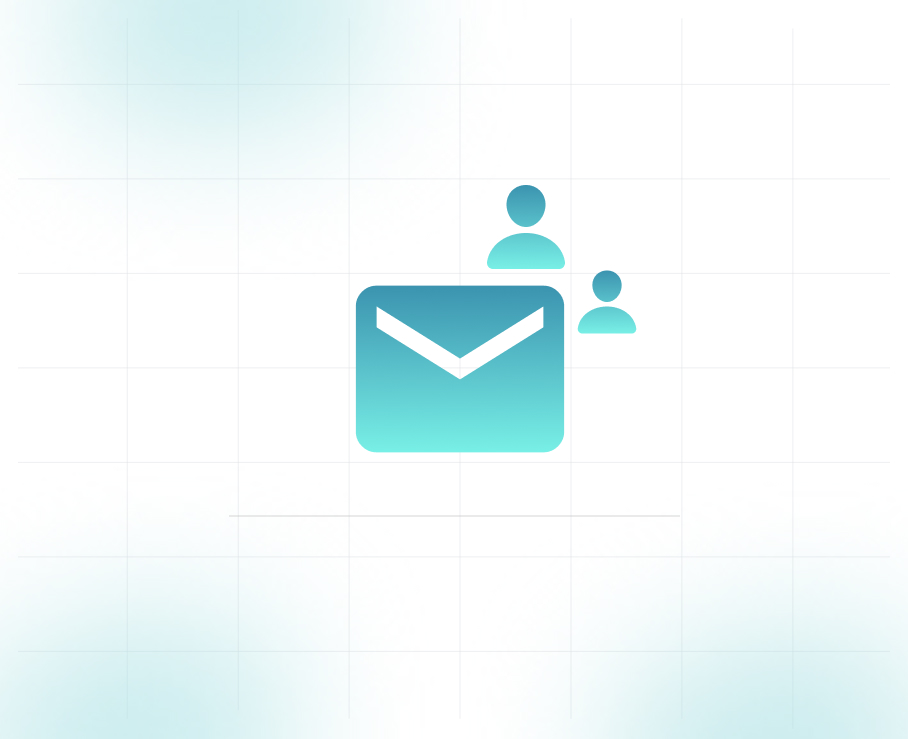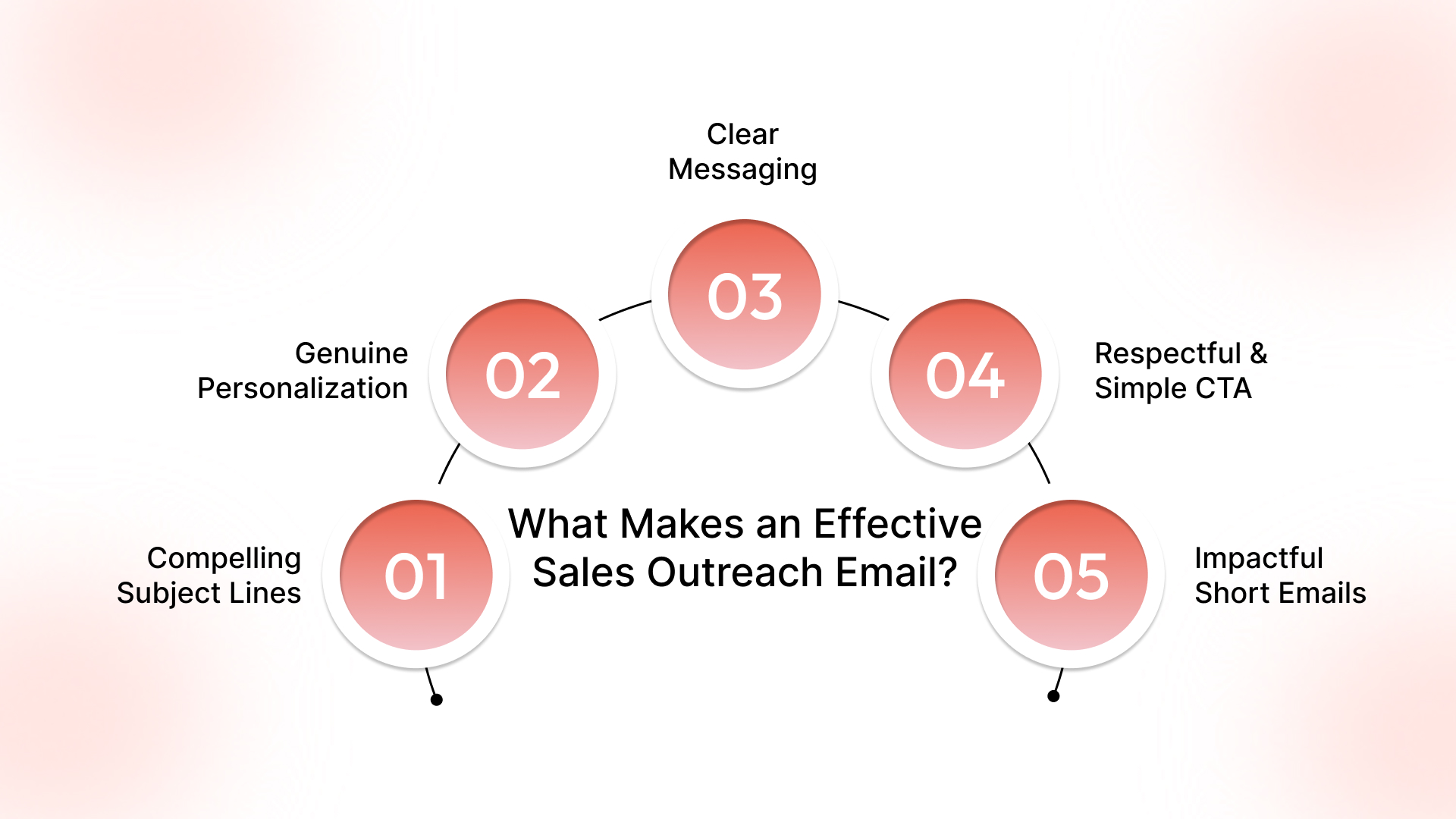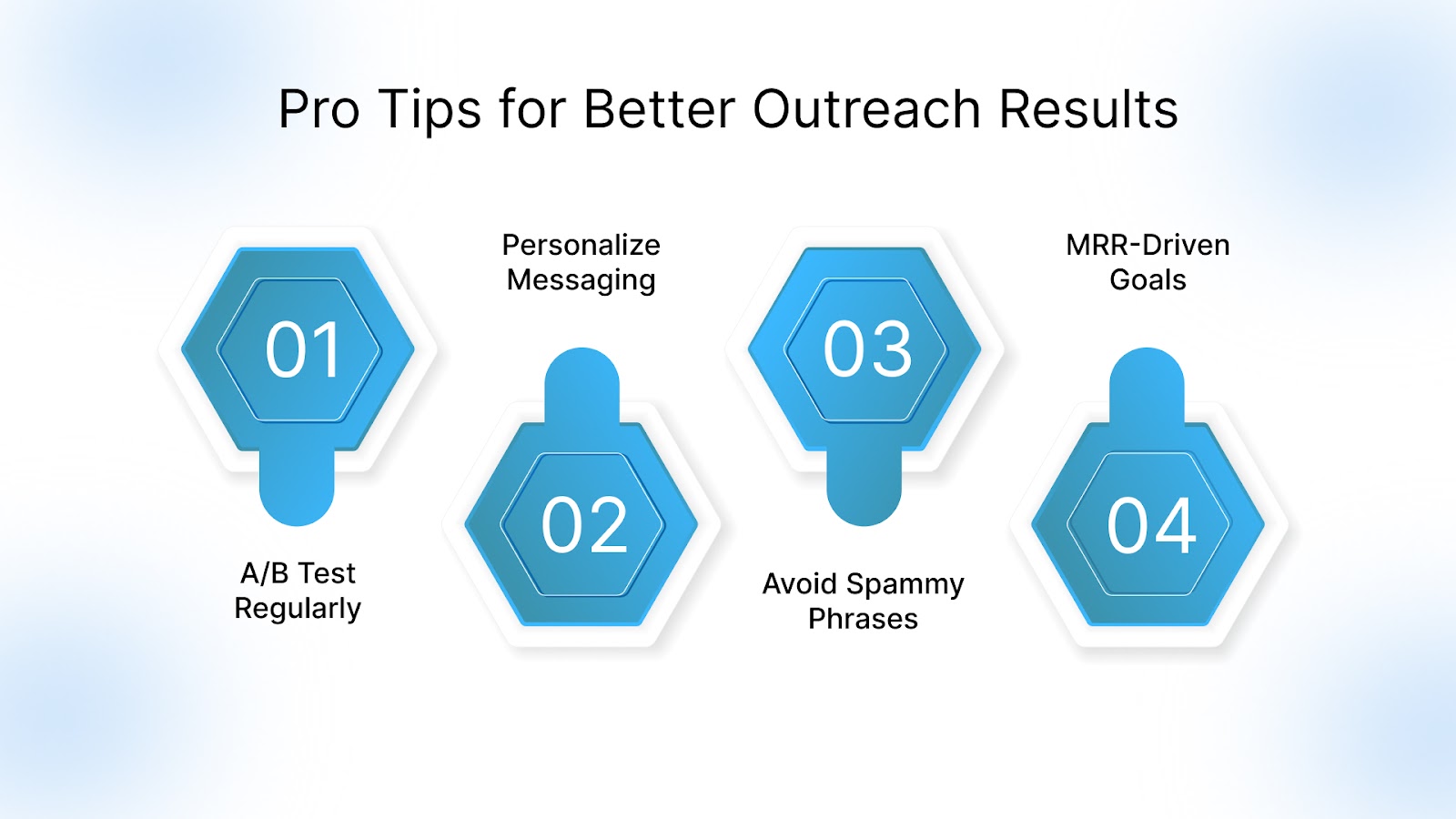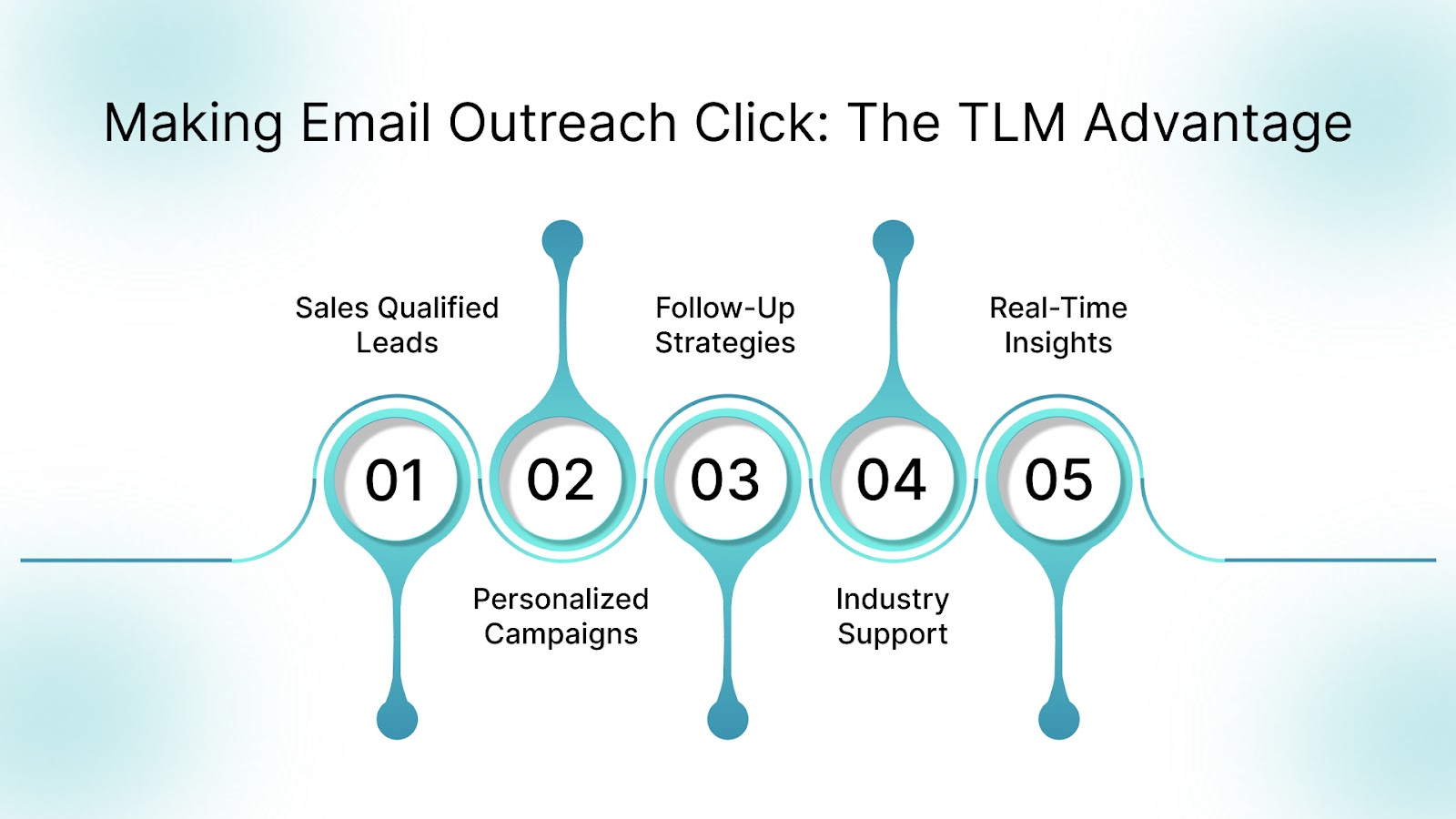
Effective Sales Email Templates for Outreach Success

A well-written email can do more than deliver a message. It can spark a conversation, build interest, and open the door to a long-term business relationship. The key is knowing how to write one that actually gets read.
In a crowded inbox, clarity and relevance matter. The more you tailor your message to the person receiving it, the more likely they are to respond. And the return on effort speaks for itself. According to Shopify, email marketing campaigns bring in an average of $36 for every $1 spent. The opportunity is real. You just need the right words at the right time.
In this blog, you’ll find five practical sales email templates that are built to start conversations. They’re easy to personalize, focused on value, and structured to help you turn outreach into booked meetings.
TL;DR
- Strong outreach emails are clear, personalized, and action-driven.
- Use templates for first touch, follow-ups, scheduling, and re-engagement.
- Segmentation and targeting boost engagement and conversions.
- TLM delivers qualified leads through compliant, email-first campaigns.
What Makes an Effective Sales Outreach Email?

Writing a sales email that feels personal, relevant, and easy to engage with isn’t complicated, but it does require intention. The best-performing emails don’t rely on gimmicks or generic templates. They get straight to the point, speak to the recipient’s needs, and make it easy to respond.
Here are the core elements that set strong outreach emails apart:
1. Subject Lines That Earn Attention Without Overpromising
Your subject line should reflect the message inside clearly and honestly. Keep it short, relevant, and specific to what you’re offering. Avoid bait tactics or click-worthy phrases that don’t deliver; trust is hard to rebuild once broken.
2. Personalization That Feels Genuine
Adding the recipient’s name isn’t enough. The personalized email should reflect an understanding of who they are and what they care about. Mentioning recent company news, industry context, or a relevant challenge they might be facing helps show that this message wasn’t sent on autopilot.
3. Clear Messaging With One Focus
Clarity builds trust. Focus on one message per email, what you’re offering, and why it matters. Keep the tone respectful and professional, and let the recipient know what’s in it for them without overexplaining.
4. A Simple and Respectful Call to Action
The most effective CTAs are the ones that feel natural. Instead of pushing hard for a meeting, try something like “Would it make sense to connect sometime this week?” It gives the reader room to decide and shows you value their schedule.
5. Short Emails That Still Offer Value
Time is a premium, especially for decision-makers. Aim for four to five sentences that convey the message clearly. That’s enough space to show relevance, spark interest, and offer a next step.
Segmentation Sharpens Your Message
The more tailored your message, the better your results. Grouping prospects by role, industry, or company size allows your outreach to feel more aligned with their needs. This is where focused efforts like targeted campaigning and account-based marketing (ABM) can help your message land.
When your outreach is structured around the priorities of a specific segment or account, it sounds less like marketing and more like a relevant opportunity. It’s a way to make your message part of their current conversation, not just another sales pitch.
If you're looking to make your outreach more relevant and results-driven, see how TLM’s(The Lead Market) targeted campaigning and account-based marketing strategies can help you connect with the right people at the right time. Learn more about targeted campaigning and account-based marketing to sharpen your messaging and improve response rates.
Template 1: First Touch Email (New Prospects)
Reaching out to someone for the first time is all about relevance. Your prospect doesn’t know who you are yet, so the goal here is to introduce yourself with clarity, speak to a real business need, and offer a low-pressure next step.
Here’s a simple, effective structure you can adapt based on industry, role, or pain point.
Email Template:
Subject: Quick question about [{{company}}’s] [{{current challenge or initiative}}]
Hi [{{first name}}],
I’ve been looking into how [{{company}}] is handling [{{pain point or challenge}}], especially with the demands that come from [{{industry-specific situation}}]. Thought I’d reach out to see if a quick conversation might be useful.
We work with teams in similar spaces who are looking to [{{value proposition, e.g., improve client retention, streamline delivery, grow MRR}}] without overloading internal teams.
Would it make sense to connect sometime next week? Even 15 minutes might help us figure out if there’s value in continuing the conversation.
Best,
[{{Your name}}]
[{{Your title}}]
[{{Your company}}]
Why this works
This first-touch email keeps things focused on the recipient. It leads with a challenge they’re likely to recognize, positions your service as a potential solution without overselling it, and gives them the space to decide. The tone is professional, but conversational, not overly formal or robotic.
At TLM, we’ve found that B2B buyers are more likely to respond when the outreach feels personalized, relevant to their industry, and respectful of their time. The goal here isn’t to close a deal in one email, but to open the door for a meaningful conversation.
If refining your first-touch outreach is on your radar, take a look at how TLM’s Lead Generation Services help businesses connect with qualified prospects and turn introductions into real sales opportunities.
Template 2: Follow-Up After No Response
It’s normal for an initial outreach to go unanswered. Timing, priorities, or inbox overload can get in the way. A thoughtful follow-up gives your message a second chance without pushing too hard.
Below is a simple follow-up email format that shows strong response rates, especially when paired with clear value and a low-pressure tone.
Subject Line A: Still open to exploring this?
Subject Line B: Just following up, in case the timing's better now
Email Template:
Hi [{{first name}}],
Just circling back in case my earlier message got missed. I know how quickly things pile up, so no worries at all if now isn’t the right time.
If [{{pain point or opportunity}}] is something you're still navigating, I’d be happy to share what others in similar roles are doing to tackle it. Even a brief chat could help determine if there’s something useful here for you.
Is this still relevant for you?
Best,
[{{Your name}}]
[{{Your title}}]
[{{Your company}}]
Why this works
This email offers a soft nudge without repeating the original message. It acknowledges the lead’s time, shows patience, and keeps the door open for a response.
TLM’s sales qualified leads strategy is designed to support this kind of outreach. Proprietary analytics tools help identify real-time engagement patterns so teams can follow up with purpose, make timely adjustments, and turn cold conversations into steady revenue growth through focused B2B outreach.
Template 3: Appointment Scheduling Email
Once someone shows interest, the next logical step is to get time on the calendar. The more straightforward the ask, the easier it becomes to move the conversation forward. A well-placed scheduling link can eliminate delays and keep the momentum going.
Here’s a simple email that helps make that happen.
Email Template:
Subject: Let’s set up a quick call
Hi [{{first name}}],
Thanks for the response. Would sometime this week work for a brief call?
Feel free to pick a time that works for you here: [{{insert calendar link}}]
Looking forward to speaking soon.
Best,
[{{Your name}}]
[{{Your title}}]
[{{Your company}}]
Why this works
The message is concise, friendly, and gives the recipient control over their schedule. It removes friction by offering a clear next step while maintaining a casual and considerate tone. This structure works well when interest has already been shown and the goal is to transition from conversation to connection.
Teams that use structured follow-ups like this often see better call confirmations and more qualified conversations. If improving this part of your outreach matters right now, TLM’s appointment scheduling services are designed to help turn interested leads into booked meetings without adding more follow-up steps.
Template 4: Warm Lead Nurturing
Some leads show clear interest but aren’t quite ready to take the next step. That doesn’t mean they’re lost. It means the timing isn’t right, yet. In these situations, staying helpful and relevant keeps the conversation going and the relationship intact.
A content-driven email like the one below works well for nurturing warm leads until they’re ready to move forward.
Email Template:
Subject: Thought this might be helpful
Hi [{{first name}}],
Hope you’re doing well. I remember our last conversation and wanted to share something that might be useful as you continue thinking through [{{pain point or topic}}].
We’ve seen others in similar roles benefit from this [{{case study, blog post, or guide}}], especially when planning for [{{initiative or timeline}}]. If it’s something you'd like to explore, I’d be happy to hear your thoughts.
Take your time, and feel free to reach out whenever it makes sense.
Best,
[{{Your name}}]
[{{Your title}}]
[{{Your company}}]
Why this works
This type of email provides value without asking for anything in return. It’s a simple way to stay visible and helpful while keeping the door open. Sharing relevant content shows that you’re thinking about their priorities, even if the timing for a meeting hasn’t arrived yet.
This is the same principle that drives TLM’s demand generation services. By staying top-of-mind through useful, well-timed content, warm leads are nurtured over time and re-engaged when they’re ready to take the next step, no pressure, no push.
Template 5: Re-Engagement Email (Past Conversations)
Not every conversation turns into an immediate opportunity. But even if a few months have passed, there’s still a chance to reopen the dialogue, especially if the timing or priorities have shifted on their side.
This template helps re-engage leads from 3 to 6 months ago in a low-pressure, respectful way.
Email Template:
Subject: Just checking in—has anything changed?
Hi [{{first name}}],
It’s been a little while since we last connected, and I just wanted to check in to see if [{{project or goal}}] is still something you’re exploring.
No rush if it’s not the right time, but if anything has shifted recently, I’d be glad to pick up where we left off.
Either way, hope things have been going well on your end.
Best,
[{{Your name}}]
[{{Your title}}]
[{{Your company}}]
Why this works
Reaching out after a quiet period can feel tricky, but a simple and sincere message often works better than something overly strategic. This kind of soft check-in respects the past conversation while opening space for a possible update.
Ongoing lead re-engagement becomes much easier when you’re working with clean, well-segmented data. That’s exactly what powers TLM’s demand generation services, giving teams the clarity to know which leads are worth revisiting, and when, so you don’t waste time chasing dead ends.
Even the best email templates can fall flat without the right approach behind them. Small changes in how you execute outreach can often make the biggest difference in response rates and lead quality.
Pro Tips for Better Outreach Results

These quick, actionable tips can help you get more out of every email you send, without overcomplicating the process.
- A/B test subject lines and CTAs regularly to understand what your audience actually responds to. Testing keeps your outreach fresh and data-informed.
- Personalize your messaging by referencing industry-specific challenges. The more relevant your message feels, the less likely it is to be ignored.
- Avoid spammy phrases and lead with useful, timely value. Building trust beats trying to force urgency.
- Focus on MRR-driven goals when you’re emailing decision-makers. Conversations rooted in revenue impact tend to get more traction.
These small tweaks, when used consistently, can set your emails apart in a crowded inbox.
TLM’s demand generation services are built around this exact approach. By combining warm lead tracking with real-time engagement insights, teams can create consistent momentum in their outreach and see measurable improvements in month-over-month lead quality and conversion.
Making Email Outreach Click: The TLM Advantage

Email outreach, when done well, turns conversations into qualified opportunities. At TLM (The Lead Market), we focus on helping your team connect with the right people at the right time, consistently and predictably.
Here’s how TLM strengthens your outreach strategy from the ground up:
- Sales Qualified Leads: Outreach campaigns are built to surface high-intent prospects who align with your goals, so you're not wasting cycles on unqualified lists.
- Personalized Campaigns: Messaging is tailored to each industry, reflecting real-world problems and trends to drive better response rates.
- Follow-Up Strategies: Structured follow-ups keep your brand top of mind and support momentum without becoming noise in someone’s inbox.
- Focused Industry Support: We bring hands-on expertise in MSPs, staffing, signage and printing, and tech to help you build campaigns that fit your space.
When all these elements come together, outreach becomes less of a gamble and more of a structured, revenue-driving system.
Here’s an example of how TLM works in action:
13 Qualified Inquiries in 60 Days for a California M&A Firm
A California-based M&A advisory firm specializing in connecting MSP buyers and sellers was struggling to meet growing buyer demand. Their existing efforts, primarily cold calling, weren’t delivering the seller-side leads they needed, especially within specific geographies and company sizes.
TLM’s Approach
TLM designed a focused email outreach campaign targeting mid-sized MSP companies (20–150 employees). The outreach was structured around three carefully timed touchpoints per contact. Our team prioritized personalization and clear messaging while ensuring that any expressions of interest were immediately converted into booked meetings on the client’s calendar.
Results
- Delivered the first qualified lead within the first month
- Uncovered growing seller-side interest by refining campaign targeting
- Generated 13 qualified inquiries over 60 days
- Earned positive feedback from the client for exceeding expectations in both volume and lead quality
TLM’s email-led outreach replaced ineffective cold calling with a structured, responsive approach that produced consistent engagement from hard-to-reach sellers.
If this approach aligns with your goals or sparks ideas about what your own campaigns could look like, let’s talk about how TLM can help turn those ideas into qualified leads.
FAQs
1. What makes a sales outreach email effective?
An effective sales outreach email is clear, personalized, and direct. It starts with a compelling subject line, addresses a real pain point, keeps the message brief, and ends with a soft yet purposeful call to action.
2. How often should I follow up if a prospect doesn’t respond?
A good cadence includes 2–3 follow-ups spaced a few days apart. Each follow-up should add value, whether it's a useful resource, new insight, or a simple check-in to keep the conversation going.
3. How does TLM help businesses improve their email outreach?
TLM supports businesses with targeted contact lists, personalized email campaigns, appointment scheduling, and real-time insights. Our Sales Qualified Lead services ensure that outreach results in real, conversion-ready conversations.
4. Why focus on email instead of cold calls or LinkedIn messaging?
Email allows for scalable, targeted, and non-intrusive outreach. TLM focuses on email because it delivers predictable results without over-reliance on platforms like LinkedIn or high-pressure phone calls.
5. Is TLM compliant with email marketing regulations?
Yes, TLM adheres to the CAN-SPAM Act and ensures that all outreach is compliant, value-driven, and respectful of recipients' preferences.






